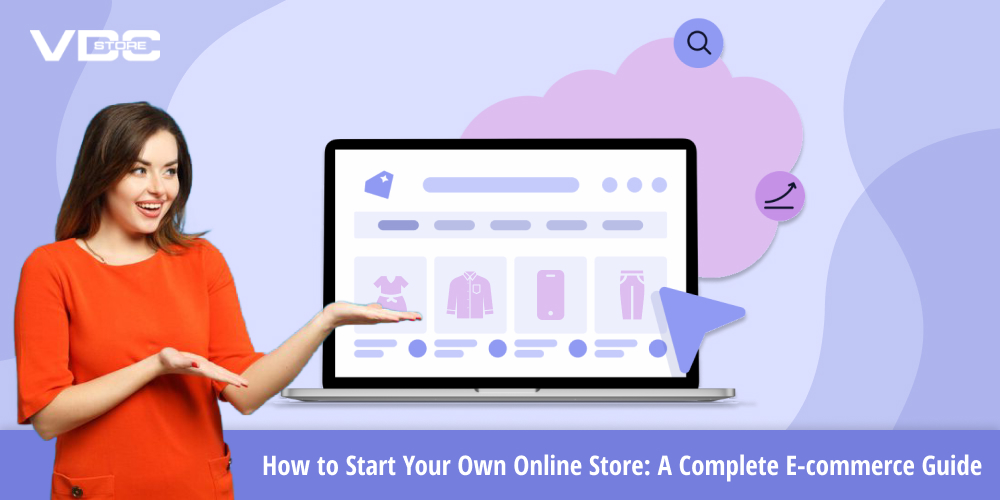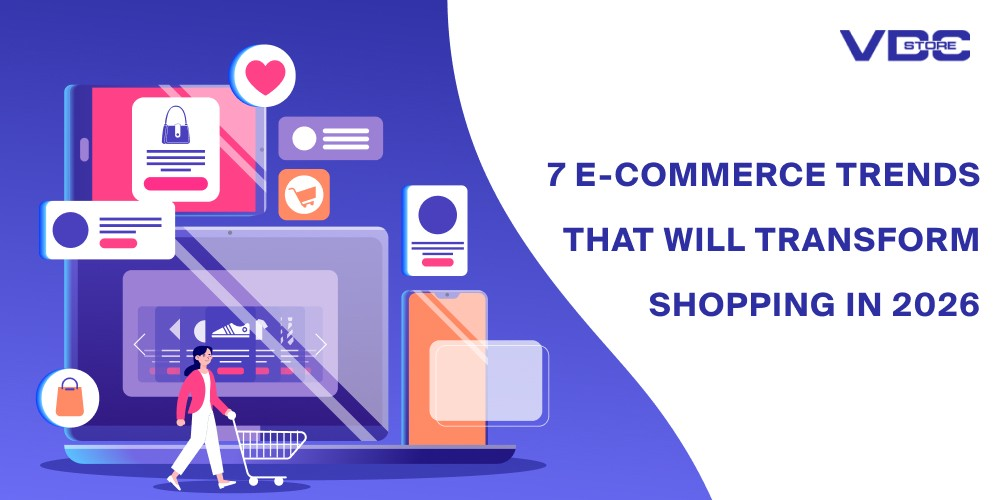How to Start Your Own Online Store: A Complete E-commerce Guide
Starting your own online store can be a thrilling journey toward financial independence and creative freedom. Whether you aim to sell handmade products, digital services, or physical goods, following a structured approach ensures your venture succeeds. With millions of businesses competing for online attention, careful planning and execution make all the difference. This guide will walk you through each step, from choosing your niche to scaling your business, so you can build a sustainable and profitable e-commerce store.


1. Choose Your Niche & Business Model
The foundation of every successful online business lies in a clear niche and business model. Without it, your brand risks becoming “just another online store.” Choosing a niche that aligns with your passion, expertise, or proven demand gives you both motivation and a competitive edge. For example, instead of simply selling “clothing,” focus on a sub-niche like eco-friendly fashion or personalized activewear.
When selecting your business model, weigh the pros and cons of each:
- B2C (Business-to-Consumer): Sell directly to individuals, ideal for products with high demand.
- B2B (Business-to-Business): Supply products or services to other businesses, usually with larger order sizes.
- Dropshipping: Avoid holding inventory by working with suppliers who ship directly to customers.
- Subscription-based: Offer recurring products like monthly beauty boxes or software services.
Being specific from the start streamlines branding, marketing, and growth decisions.
2. Conduct Market Research & Validate Your Idea
Once you’ve defined your niche, it’s time to conduct market research and validate your idea. Many entrepreneurs skip this step, only to discover too late that demand isn’t strong enough.
Here’s how you can validate effectively:
- Online tools: Use Google Trends, SEMrush, or Ahrefs to identify keyword demand and search volumes.
- Social media insights: Platforms like Instagram, TikTok, and Facebook Groups reveal trending products and customer conversations.
- Customer surveys: Reach out to target audiences with polls or email questionnaires.
- Competitive analysis: Study your competitors—what products they sell, how they market them, and where they fall short.
Validating early prevents wasted resources and helps you refine your offering before launch.
3. Pick the Right E-commerce Platform (best Magento plugins)
Your e-commerce platform is the backbone of your online business. It powers your store, manages transactions, and integrates with tools that enhance efficiency. Popular choices include Magento, Shopify, and WooCommerce.
- Magento: A robust, scalable platform ideal for medium to large businesses. With the best Magento plugins, you can improve site speed, enhance SEO, enable marketing automation, and simplify checkout.
- Shopify: A user-friendly option, perfect for beginners who want drag-and-drop design features and easy app integrations.
- WooCommerce: A flexible WordPress plugin, excellent for businesses that want more control and customization.
Think long-term—choose a platform that grows with you rather than one you’ll outgrow in a year.
4. Register Your Domain & Set Up Hosting
Your domain name is your online identity. Make it short, memorable, and relevant to your niche. For example, a name like “ArtisanGems.com” is better than a generic one for a store selling handmade jewelry.
Next, invest in reliable hosting. A slow or unstable website can drive customers away. Look for hosting that offers:
- High uptime (99.9% or higher).
- SSL certificates for secure payments.
- Scalability to handle growing traffic.
If you’re using Magento or WooCommerce, ensure your hosting provider meets the platform’s technical requirements and offers fast servers for optimal performance.
5. Build & Design Your Online Store
First impressions matter, and your store design can make or break conversions. Customers won’t trust—or buy from—a store that looks unprofessional.
- Use responsive themes that work seamlessly on desktops, tablets, and smartphones.
- Create clear product categories and intuitive navigation so customers find what they need quickly.
- Incorporate trust signals like security badges, return policies, and reviews.
- Add strong CTAs (Call-to-Actions) such as “Buy Now” or “Add to Cart” in prominent positions.
Both Shopify and Magento offer drag-and-drop builders and page editor tools that make customization easier. Keep your design simple, clean, and aligned with your brand’s identity.
6. Add Products & Create Compelling Listings
Product listings are your digital salespeople. Weak listings lead to lost sales—even if your product is excellent.
Focus on three essentials:
- High-quality images: Use multiple angles, zoom options, and lifestyle shots to help customers visualize.
- Detailed descriptions: Highlight key features, but also emphasize benefits. Instead of “Made of cotton,” say “Soft, breathable cotton that keeps you comfortable all day.”
- Keywords for SEO: Optimize titles and descriptions so products appear in search results.
Encourage user-generated content, like reviews and testimonials, to increase trust and social proof.
7. Set Up Payments & Shipping (Magento 2 Razorpay Subscription Extension)
Customers expect secure, convenient, and flexible payment methods. Integrate gateways such as PayPal, Stripe, and credit/debit card options. If you’re on Magento, tools like the Magento 2 Razorpay Subscription Extension simplify recurring payments for subscription-based models.
For shipping:
- Offer multiple options—standard, express, and international if possible.
- Be transparent with delivery timelines and costs.
- Provide real-time tracking to enhance customer experience.
A smooth checkout and reliable delivery system reduce cart abandonment and increase loyalty.
8. Optimize for SEO & Mobile
Traffic is the lifeblood of your store, and SEO ensures long-term, cost-effective visibility.
- Use descriptive URLs, meta titles, and meta descriptions for each product.
- Optimize images with alt tags.
- Create a blog that answers customer questions and builds authority in your niche.
Additionally, mobile optimization is non-negotiable. Most online shopping happens on smartphones, so ensure your site loads quickly, uses large fonts, and has touch-friendly buttons. Google also ranks mobile-optimized sites higher in search results.
9. Launch & Market Your Store
Once your store is ready, it’s time to launch and market it. Simply going live isn’t enough—customers need to know you exist.
- Use social media campaigns to generate excitement.
- Partner with influencers to reach wider audiences.
- Offer launch discounts, giveaways, or limited-time bundles.
- Build an email list early and send targeted campaigns.
Paid ads on platforms like Google and Facebook can also give your store a traffic boost in the early days.
10. Common Mistakes to Avoid
Many e-commerce businesses fail due to avoidable errors. Watch out for these pitfalls:
- Slow website speeds that frustrate users.
- Complicated checkouts leading to cart abandonment.
- Ignoring SEO, which limits organic traffic.
- Unreliable suppliers that harm your reputation.
- Poor customer service, which reduces repeat business.
Regularly audit your website, inventory, and customer feedback to stay ahead.
11. Scale & Grow Your Online Store
Once you’ve established your store, shift focus to growth strategies. This is where you transform a side hustle into a sustainable business.
- Expand your product line or introduce complementary products.
- Use advanced analytics to identify bestsellers and underperformers.
- Implement automation tools for email campaigns, inventory tracking, and customer follow-ups.
- Introduce loyalty programs, referral discounts, and subscription models.
Scaling isn’t just about getting more customers—it’s about retaining them and maximizing lifetime value.
Conclusion
Starting an online store involves careful planning, execution, and continuous improvement. From choosing your niche and business model to scaling your store, each step plays a critical role in your success. Platforms like Magento, Shopify, and WooCommerce, combined with the best Magento plugins and tools like the Magento 2 Razorpay Subscription Extension from VDCStore, provide everything you need to create a professional, high-performing e-commerce business.
With a clear niche, compelling product listings, mobile-friendly design, and consistent marketing, you'll be well-positioned to attract customers, drive sales, and achieve long-term growth. Remember, the e-commerce world rewards consistency, innovation, and customer-centric strategies.

 AUD -
Australian Dollar
AUD -
Australian Dollar GBP -
British Pound
GBP -
British Pound INR -
Indian Rupee
INR -
Indian Rupee SGD -
Singapore Dollar
SGD -
Singapore Dollar



